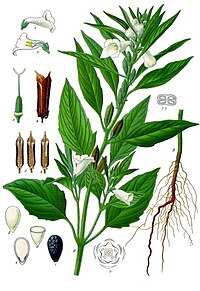
Retracted: Effects of dietary supplementation with a probiotic (Enterococcus faecium DSM 7134) on growth performance, nutrient digestibility, and gut health status in weaning pigs.
Sign Up to like & getrecommendations! Published in 2018 at "Journal of the science of food and agriculture"
DOI: 10.1002/jsfa.8374
Abstract: BACKGROUND Probiotics have been suggested as desirable antibiotic alternatives to pigs by improving gut health and growth performance. However, limited studies of the effectiveness of E. faecium in weaning pigs, the objective of this study… read more here.
Keywords: growth performance; supplementation; faecium; growth ... See more keywords

Microbial interaction between the succinate‐utilizing bacterium Phascolarctobacterium faecium and the gut commensal Bacteroides thetaiotaomicron
Sign Up to like & getrecommendations! Published in 2020 at "MicrobiologyOpen"
DOI: 10.1002/mbo3.1111
Abstract: A large variety of microbes are present in the human gut, some of which are considered to interact with each other. Most of these interactions involve bacterial metabolites. Phascolarctobacterium faecium hardly uses carbohydrates for growth… read more here.
Keywords: commensal bacteroides; succinate; faecium; phascolarctobacterium faecium ... See more keywords

Potential of Enterococcus faecium LM5.2 for lipopeptide biosurfactant production and its effect on the growth of maize (Zea mays L.).
Sign Up to like & getrecommendations! Published in 2022 at "Archives of microbiology"
DOI: 10.1007/s00203-022-02834-9
Abstract: This study characterized the lipopeptide biosurfactants produced by lactic acid bacteria isolated from milk and milk products, in addition to their effect on maize plant growth. The oil displacement test was performed as a primary… read more here.
Keywords: faecium; zea mays; growth; faecium lm5 ... See more keywords

Detection and characterization of bacterial polysaccharides in drug-resistant enterococci
Sign Up to like & getrecommendations! Published in 2019 at "Glycoconjugate Journal"
DOI: 10.1007/s10719-019-09881-3
Abstract: Enterococcus faecium (E. faecium) has emerged as one of today’s leading causes of health care-associated infections that is difficult to treat with the available antibiotics. These pathogens produce capsular polysaccharides on the cell surface which… read more here.
Keywords: detection characterization; faecium; capsular polysaccharides; bacterial polysaccharides ... See more keywords

Heat Adaptation Improved Cell Viability of Probiotic Enterococcus faecium HL7 upon Various Environmental Stresses
Sign Up to like & getrecommendations! Published in 2018 at "Probiotics and Antimicrobial Proteins"
DOI: 10.1007/s12602-018-9400-4
Abstract: The production of viable functional probiotics presupposes stability of strain features in the final product. In previous studies, Enterococcus faecium HL7 was found to have relatively higher cell viability after freeze-drying and the long-lasting resistance… read more here.
Keywords: heat; cell viability; faecium hl7; faecium ... See more keywords

Screening of the Enterocin-Encoding Genes and Their Genetic Determinism in the Bacteriocinogenic Enterococcus faecium GHB21
Sign Up to like & getrecommendations! Published in 2018 at "Probiotics and Antimicrobial Proteins"
DOI: 10.1007/s12602-018-9448-1
Abstract: Enterococci are well-known for their ability to produce a variety of antimicrobial peptides called enterocins. Most of these enterocins withstand extreme conditions and are very effective against a broad spectrum of undesirable bacteria including some… read more here.
Keywords: enterococcus faecium; screening enterocin; enterocin encoding; faecium ghb21 ... See more keywords

Radiofrequency inactivation of Salmonella Enteritidis PT 30 and Enterococcus faecium in wheat flour at different water activities
Sign Up to like & getrecommendations! Published in 2017 at "Biosystems Engineering"
DOI: 10.1016/j.biosystemseng.2017.01.001
Abstract: Salmonella persistence in low-moisture foods creates a significant need for effective pasteurisation processes, but conventional thermal treatments for low-moisture products are challenged by long treatment times and insufficient information on inactivation kinetics. Radiofrequency (RF) heating… read more here.
Keywords: enterococcus faecium; wheat flour; salmonella; faecium ... See more keywords

Enterococcus faecium as a Salmonella surrogate in the thermal processing of wheat flour: Influence of water activity at high temperatures.
Sign Up to like & getrecommendations! Published in 2018 at "Food microbiology"
DOI: 10.1016/j.fm.2018.03.001
Abstract: This study investigated the influence of temperature-dependent water activity (aw) on thermal resistances of Enterococcus faecium NRRL B-2354 (E. faecium) and Salmonella Enteritidis PT 30 (S. Enteritidis) in wheat flour. The aw for wheat flour samples… read more here.
Keywords: enterococcus faecium; wheat flour; salmonella; water activity ... See more keywords

Inactivation of Salmonella enterica and Enterococcus faecium NRRL B2354 on cumin seeds using gaseous ethylene oxide.
Sign Up to like & getrecommendations! Published in 2021 at "Food microbiology"
DOI: 10.1016/j.fm.2020.103656
Abstract: The objectives of this study were to investigate the effects of processing parameters (relative humidity (RH), temperature, and exposure time) on the ethylene oxide (EtO) microbial inactivation of Salmonella spp. and to evaluate Enterococcus faecium… read more here.
Keywords: salmonella; cumin seeds; treatment; inactivation ... See more keywords

Gastrointestinal survival and adaptation of antibiotic-resistant enterococci subjected to an in vitro digestion model
Sign Up to like & getrecommendations! Published in 2020 at "Food Control"
DOI: 10.1016/j.foodcont.2019.107033
Abstract: Abstract The ability of four enterococcal strains to survive human digestion and maintain their antibiotic resistance (AR) traits was investigated to determine the health risk posed by seafood-borne streptomycin-, erythromycin-, tetracycline- and gentamycin-resistant enterococci. After… read more here.
Keywords: vitro digestion; digestion; antibiotic resistant; faecium ... See more keywords

Characteristics of clinical and environmental vanM-carrying vancomycin-resistant enterococci isolates from an infected patient.
Sign Up to like & getrecommendations! Published in 2018 at "International journal of antimicrobial agents"
DOI: 10.1016/j.ijantimicag.2018.01.003
Abstract: vanM, an uncommon glycopeptide resistance gene, was first identified in an Enterococcus faecium isolate (Efm-HS0661) from Shanghai, China, in 2006 and has been predominant in this city since 2011. A vanM-carrying E. faecium was isolated… read more here.
Keywords: clinical environmental; environmental vanm; vanm carrying; vanm ... See more keywords